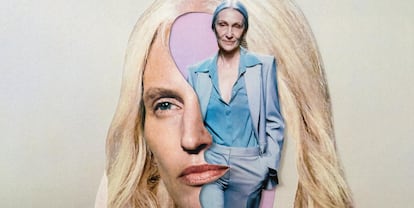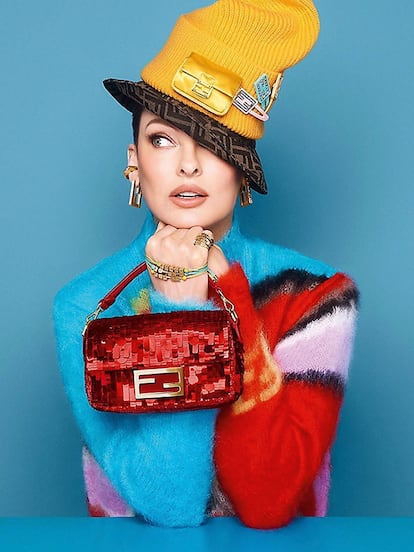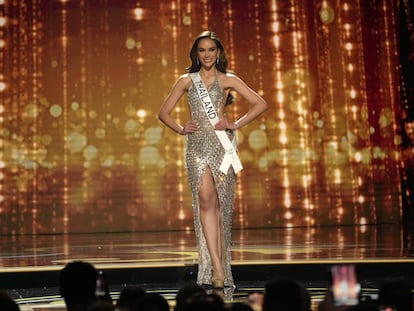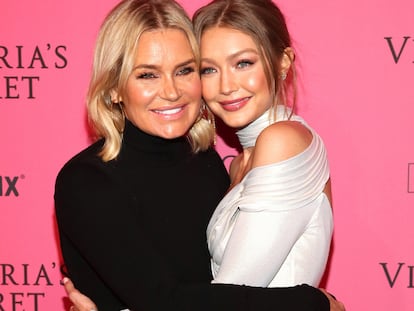The power of gray hair
Aging is no longer a taboo in the fashion world, but doesn’t mean that ageism is a thing of the past

Gray hair is back. In a not-so-surprising turn of events, brands and designers are embracing aging once again. Veteran figures are reappearing this season: Diane Keaton, at 76, shows off a blue leather coat in J.Crew’s Heritage Made Modern campaign; Kim Gordon, 69, poses with her daughter Coco for Marc Jacobs; Isabelle Huppert, also 69, models for Balenciaga; and Jeff Goldblum, 70, revalidates his title as the coolest man in the world as the face of Prada’s autumn-winter men’s line.
Just before the pandemic, Variety published the results of a poll, conducted by the talent agency Spotted, on the appeal of different actors’ brand partnerships. The average age of the best-rated actors was over 40, while most of the lower-ranked actors were in their twenties. Just like a fine wine, the relationship between attractiveness and consumer trust improves with age. Spotted co-founder and CEO Janet Comenos explained: “If you’ve only been famous a few years and starred in a few films, the types of consumers you’ve been exposed to are smaller than if you’ve starred in 50 films and people have gotten to know you over time.” Dwayne “The Rock” Johnson, 50, held the top spot on the list, after his collaboration with sports brand Under Armour sold out in just a half hour.
Since writer Joan Didion became the face of Phoebe Philo’s Céline at the age of 80, the fashion brand has overcome its fear of wrinkles. Hedi Slimane, who will soon succeed Philo, already proved that age wasn’t an issue when he brought a 68-year-old Marianne Faithfull onto the scene for Saint Laurent’s autumn-winter 2014 campaign. And in Prada, famous older men have regularly walked alongside young models: Gary Oldman and Willem Dafoe, at 54 and 57 of age, respectively, made appearances in the autumn-winter 2012 show. But the 2015 photograph of Didion, with a silver bob and XXL sunglasses, set a precedent in an industry that has relied on images of youth at least for the last two decades. A 70-year-old Neil Young showed off his old-school rocker attitude for fans of Supreme’s streetwear. Charlotte Rampling, also 70, gave a lesson in style as part of Jonathan Anderson’s Loewe campaign. Jane Fonda, at 82, starred in advertisements for Gucci’s sustainable line Off the Grid. All are the result of the impact of the Didion campaign, which broke fashion’s taboo on old age, especially when it comes to women.

“Who wouldn’t like to be like Julianne Moore at 61 years old?,” read headlines about the American actress, who is also a face of J.Crew’s Heritage Made Modern collection. The good intentions are clear, but these images of older women do bring implicit new pressures on female beauty, obliging middle-aged women — who generally invisible at all levels — to measure themselves against standards just as stringent as the ones applied to teenagers and twenty-somethings. For example, Linda Evangelista’s return last summer, as the representative of Fendi’s Baguette bag, was controversial. The legendary Canadian supermodel, at 55 years old, appeared with her face obscured to hide the evidence of the cosmetic procedure that disfigured her body and left her face swollen. It was a lost opportunity to normalize what happens to many women who go under the knife in an attempt to prolong their youth. The images are yet more evidence that ageism remains present: the industry has opened the door to the over-60s, but only if they have youthful skin, sinewy bodies and silky white hair.
It’s a pressing issue for the broader fashion industry as well. The platform Drapers presented a report last July in which it concluded, according to the testimony of various anonymous sources, that 60% of employees in the sector between the ages of 50 and 65 suffer age discrimination. Most are forced into early retirement, especially designers, stylists, and those who work in customer service.
Sign up for our weekly newsletter to get more English-language news coverage from EL PAÍS USA Edition
Tu suscripción se está usando en otro dispositivo
¿Quieres añadir otro usuario a tu suscripción?
Si continúas leyendo en este dispositivo, no se podrá leer en el otro.
FlechaTu suscripción se está usando en otro dispositivo y solo puedes acceder a EL PAÍS desde un dispositivo a la vez.
Si quieres compartir tu cuenta, cambia tu suscripción a la modalidad Premium, así podrás añadir otro usuario. Cada uno accederá con su propia cuenta de email, lo que os permitirá personalizar vuestra experiencia en EL PAÍS.
¿Tienes una suscripción de empresa? Accede aquí para contratar más cuentas.
En el caso de no saber quién está usando tu cuenta, te recomendamos cambiar tu contraseña aquí.
Si decides continuar compartiendo tu cuenta, este mensaje se mostrará en tu dispositivo y en el de la otra persona que está usando tu cuenta de forma indefinida, afectando a tu experiencia de lectura. Puedes consultar aquí los términos y condiciones de la suscripción digital.
More information
Últimas noticias
Mexico seeks to shore up its defenses following US incursion in Venezuela
Hope gives way to uncertainty among Venezuelan exiles in the US after Maduro’s capture
Cubans look to Venezuela fearfully after Trump’s incursion: ‘We could be next’
The operation in Venezuela to capture Maduro threatens to widen the cracks in the MAGA movement
Most viewed
- Alain Aspect, Nobel laureate in physics: ‘Einstein was so smart that he would have had to recognize quantum entanglement’
- Alvin Hellerstein, a 92-year-old judge appointed by Bill Clinton, to preside over Maduro’s trial in New York
- Gilles Lipovetsky: ‘If you want to live better and fall in love, take Prozac, don’t look to philosophy’
- Cuba confirms death of 32 of its citizens in the US attack against Venezuela
- Why oil has been at the center of Venezuela-US conflicts for decades










































